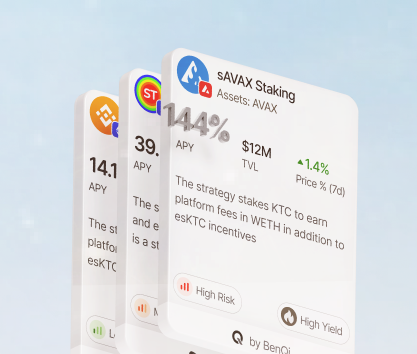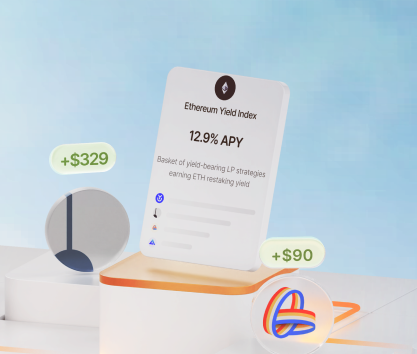Polygon is the most renowned layer-2 project of the Ethereum ecosystem. Established in 2017, it is still one of the most promising blockchains that hope to significantly increase the throughput of the underlying Ethereum chain and offer a plethora of opportunities to DeFi projects that choose Polygon as their home.
This blockchain has a variety of projects focused on offering yield farming opportunities. Investors will find a plethora of low-TVL pools with extremely generous returns and a handful of massive pools that offer moderate returns on investments. Choosing the right destination for capital allocation can be quite challenging for newcomers but we will give you a couple of tips on how to find excellent yield farming pools on Polygon.
Exploring the Polygon DeFi ecosystem
Polygon has a multitude of interesting protocols that offer rewards to users. Among the most recognized brands are Merkl, Aura, Meshswap, and Curve. Since Polygon operates as an EVM-compatible ecosystem, most of the protocols using Ethereum as their baseline offer their services to Polygon users. In total, Polygon’s tracked pools have a massive $807 million TVL which is roughly 1.07% of the overall DeFI TVL across all chains. By this metric, this chain is bigger than Scroll and Blast.
Searching for a good investment opportunity on this blockchain network can be quite hard even for experienced crypto enthusiasts since many pools are offered by protocols that do not have sufficient adoption rates to generate returns consistently. Due to this fact, many platforms offer rewards in native tokens that quickly succumb to inflation.
It is hugely important for all investors to consider the possible risks and advantages of investing in pools on Polygon since the future of the project is still vague. Despite massive investments from multiple venture capital funds and various partnerships with widely recognized platforms and corporations, the network is still behind Arbitrum, Avalanche, Base, BSC, and Solana in terms of user activity, total value locked, and some other metrics.
Nonetheless, the community is still very active and the variety of investment opportunities in the yield farming sector particularly can be sufficient for a proactive investor to create a balanced portfolio that consistently outperforms tradfi investments like US treasury bonds (4.11% APY in 2024) or high-yield bank accounts (roughly 5%).
Maximizing yield on Polygon
When it comes to the best approaches to investing, we believe that concentrating on positions and trying to get the highest APYs is hugely important. Polygon does not work for conservative investors looking for a safe haven to park their capital. Instead, it is mostly a speculative network with many native tokens quickly losing value. Timing your exit properly and searching for yield farming opportunities that justify switching to this blockchain instead of investing in a more popular one should be your top priorities.
Since the chain has several derivatives platforms and other DeFi protocols that allow investors to hedge against market risks and employ a variety of financial instruments to offset some risks, it is possible to create a relatively safe, consistent, and highly profitable strategy. However, the uncertainty horizon is too vague to focus on long-term strategies. Investing in layer 1 networks like Ethereum and Bitcoin or focusing on more popular protocols can be a much better idea for investors interested in a slow and steady investment strategy.
Polygon yield farming strategies
Finding good opportunities for capital allocation on Polygon is not as easy as some crypto enthusiasts may try to tell you. This blockchain has several great protocols with incredibly generous rewards. However, low TVLs and insufficient utilization make them dangerous choices for inexperienced investors or those who plan to go the invest-and-forget route.
If you plan to work with this blockchain, we highly recommend following a couple of simple rules:
- Avoid obvious pump-and-dump schemes and protocols that do not have a good track record. Polygon is known for its many memecoins and rug pulls. In many cases, these projects do not hide their intentions and work like standard degen farms aiming at both inexperienced novices who do not understand how these platforms work and investors who bet on their own ability to time the exit correctly.
- Carefully inspect smart contracts and investment conditions. It is important to understand how pools operate. You should learn the revenue-generating model, fee structures, reward structures, and other important aspects of the protocol and its pools. You will need some technical expertise to review smart contracts that are deployed by protocols that do not have comprehensive technical documentation.
- Consider working with multi-chain protocols. Investors can move assets more easily from one chain to another without liquidating their positions completely or by using affiliated bridges. Merkl is a good example of a platform operating across several chains including Ethereum, Base, Polygon, and Polygon zkEVM. Investing in such protocols can be safer than putting money directly into projects focused solely on Polygon.
- Always consider the prices of reward tokens. For example, by investing in the WETH-QUICK pool on Merkl, you can receive up to 62% in QUICK rewards. It seems like a generous proposition but the price of the QUICK token has been very volatile and lost over 70% of its value since launching. The price has a tendency to recover slightly once in a while but it is still a losing game for the vast majority of investors. Timing your liquidations properly is extremely important.
Yield farming strategies on Polygon
Since this blockchain has a variety of protocols, you can employ some creative investment strategies allowing you to layer stakes or hedge against risks using derivatives to build delta-neutral positions. We will explore some examples of yield farming that you can engage in using instruments offered by various protocols on Polygon.
- Use liquid staking to enhance yields. Polygon has several suitable options including Stadder and LIDO. The former offers a 15.36% APY on MATICX while allowing you to use liquid tokens on lending/borrowing protocols like Aave where you can borrow against it at a 0.34% APR. Use MATICX and USDC on Meshswap to receive up to 27.78% in MESH rewards. Note that this token has not yet been tracked (as of September 2024).
- Focus on rewards in established tokens. Some multi-chain protocols offer rewards in their native tokens that are performing quite well. For instance, you can invest CRV tokens on Curve to receive 2.16% in CRV rewards on top of 1.19% pool APY. Investing USDT in the pool on Compound V3 yields roughly 2.1% in COMP rewards on top of 2.03% base APY. If you want to work with tokens that have a good track record, it is a good idea to focus on these multi-chain platforms.
- Seel strong combinations of pool and reward APYs. It is a good idea to focus on protocols that offer great rewards on top of paying somewhat competitive interest rates. While finding such options can be hard, several platforms offer good asset compositions. For instance, Meshswap has a WMATIC-WETH pool with a reasonable 1.62% base APY and 7.63% in MESH rewards. Alternatively, Compound offers a 3.05% pool APY on USDT investments with up to 3.5% in COMP rewards.
Despite its long history and relatively strong track record, Polygon is a network with limited options in terms of investment opportunities due to the lack of active protocols at the time of writing. Viable platforms are few and between with some protocols getting insufficient traction to ensure consistent growth far into the future. Nevertheless, an experienced investor can find good options.
We are going to cover some of the most reliable protocols on the Polygon chain. Hopefully, some of the options we are going to list below will attract your attention and provide you with some food for thought.
When it comes to choosing a good destination for capital allocation, one must focus on many factors including protocol reliability, smart contract design, potential yields, and more. We won’t be discussing all of the available options in detail. However, each of the platforms mentioned below has yield farming opportunities and sizeable TVL numbers.
- Compound V3. This protocol is the oldest lending platform in the DeFi sector. It works across 22 different chains and offers a variety of investment options to Ethereum users. If you are operating within the Polygon ecosystem, you won’t have the same diversity of choice since Compound offers only USDT and USDC pools on this chain. The former has a low TVL of $924K which is magnitudes smaller than the latter’s $4.73 million. Investing in USDC yields 2.18% pool APY and 1.2% in COMP rewards. USDT investors receive 3.05% base APY and 3.04% in rewards.
- Merkl is a multi-chain liquidity protocol that offers a variety of rewards to users depending on where they want to stake their assets. Merkl operates 73 pools across Polygon and Polygon zkEVM. You can find a plethora of interesting rewards here including LAND tokens from the Decentraland game, CONE from the BitCone project, and more. Investing in the USDC-WETH pool on Merkl will yield you roughly 57.7% in combined MATICX and QUICK rewards. Another good option is the WMATIC-WETH pool with 16.11% rewards and TVL over $2.2 million.
- Curve DEX is a premiere Ethereum decentralized exchange tightly connected to the hugely popular Convex Finance platform. You can find a variety of investment opportunities on Curve. If you are looking for excellent yield farming opportunities, take a closer look at the CRV-VSDCRV-ASDCRV pool on this protocol. It is a relatively new offering with 2.87% base APY and 9.1% in CRV rewards. Investors enjoyed a massive 199% APY throughout the first month of investing. Conservative investors will find the CRV-CRVUSDBTCETH pool appealing as it offers 0.34% mixed pool APY and up to 2.11% in CRV rewards.
Note that we did not cover some riskier protocols like Meshswap, Azuro, or Aura. These projects are either too young to judge them fairly or have low TVL numbers on Polygon to be considered viable targets for efficient capital allocation. Nevertheless, some of these platforms have interesting pools that may catch your attention.
The best yield farming pools Polygon
It is quite important to monitor different pools on a variety of protocols regardless of how these platforms perform. In some cases, you will find an excellent investment opportunity too good to pass. We will give you several intriguing options for different purposes:
- Three good pools to receive reasonable returns on investments without exposing your portfolio to unnecessary risks.
- Three incredibly profitable options from protocols that are still growing or have more dangerous risk profiles.
As an investor, you will have to make the last call. However, we have to remind you that we do not endorse any of the platforms mentioned in this article. The information above and below is strictly educational.
Yield farming pools on Polygon
Among pools that offer sizeable rewards while having good TVL numbers and being situated on protocols with a good track record, you can always find something useful for a portfolio. Let’s have a look at some pools in this category.
- The USDC-WETH pool is operated by Merkl through the Polygon-native decentralized exchange Quickswap. While Merkl has many other interesting choices for conservative investors, this particular pool is somewhere in the middle between dangerous risks and moderate returns. Investors receive up to 29.65% QUICK rewards on their investments in a pool with over $1.45 million TVL. Monthly averages look healthy and the QUICK token has been doing particularly well in August 2024 gaining 134% in just thirty days.
- The ETH single-sided pool on Hop Protocol is a good choice for investors interested in allocating their layer 1 tokens on the Polygon chain. Investors enjoy a small 0.79% base APY on ETH and receive 5.05% in HOP rewards with monthly averages consistently outperforming expectations. In August 2024, users received 7.18% mixed APY instead of the expected 5.84%. The issue with this protocol is that the native HOP token is inflationary and has lost 98.9% of its value since launching in July 2022.
- The USDC (SuperchargerV2) pool on WOOFi Earn is also a good choice for investors seeking moderate returns without overexposing their portfolios. The pool pays up to 6.94% in base APY and 3.8% in WOO rewards. Receiving gains on stablecoin holdings is always great. On top of that, the WOO token is a highly volatile, speculative asset that you can sell at a reasonably high price if you time the market properly. The pool is often outperforming expectations with 30-day averages in September 2024 being 0.59% higher than expected.
High APY pools on Polygon
Some investors are ready to take on higher risks to get a better yield. Polygon still has some pools that offer exorbitant rewards. However, investors should be careful when investing in pools with low TVL or suspiciously high interest rates.
- The WSDM-USDT pool on Merkl has a sizeable $145K TVL and offers up to 179% in QUICK rewards. 30-day mean average is 204% according to DeFiLlama.
- The USDC-OMOOI pool on Meshswap has a $64K TVL and pays 0.57% in pool APY with 252% MESH rewards on top.
- WMATIC-WETH (0.05%) pool on Retro with a $86K TVL pays over 86% in native tokens, but 30-day averages are often disappointing.
The main takeaway
It is possible to find good investment opportunities on Polygon but the variety of options is limited and the risk is quite high. If you believe in the future of the network and want to bet on its growth, investing here can be a reasonable decision. However, it is a much better idea to allocate capital on networks with higher user activity and more value locked. Polygon is also not supported by many aggregators and investment protocols like Rivo.xyz.









